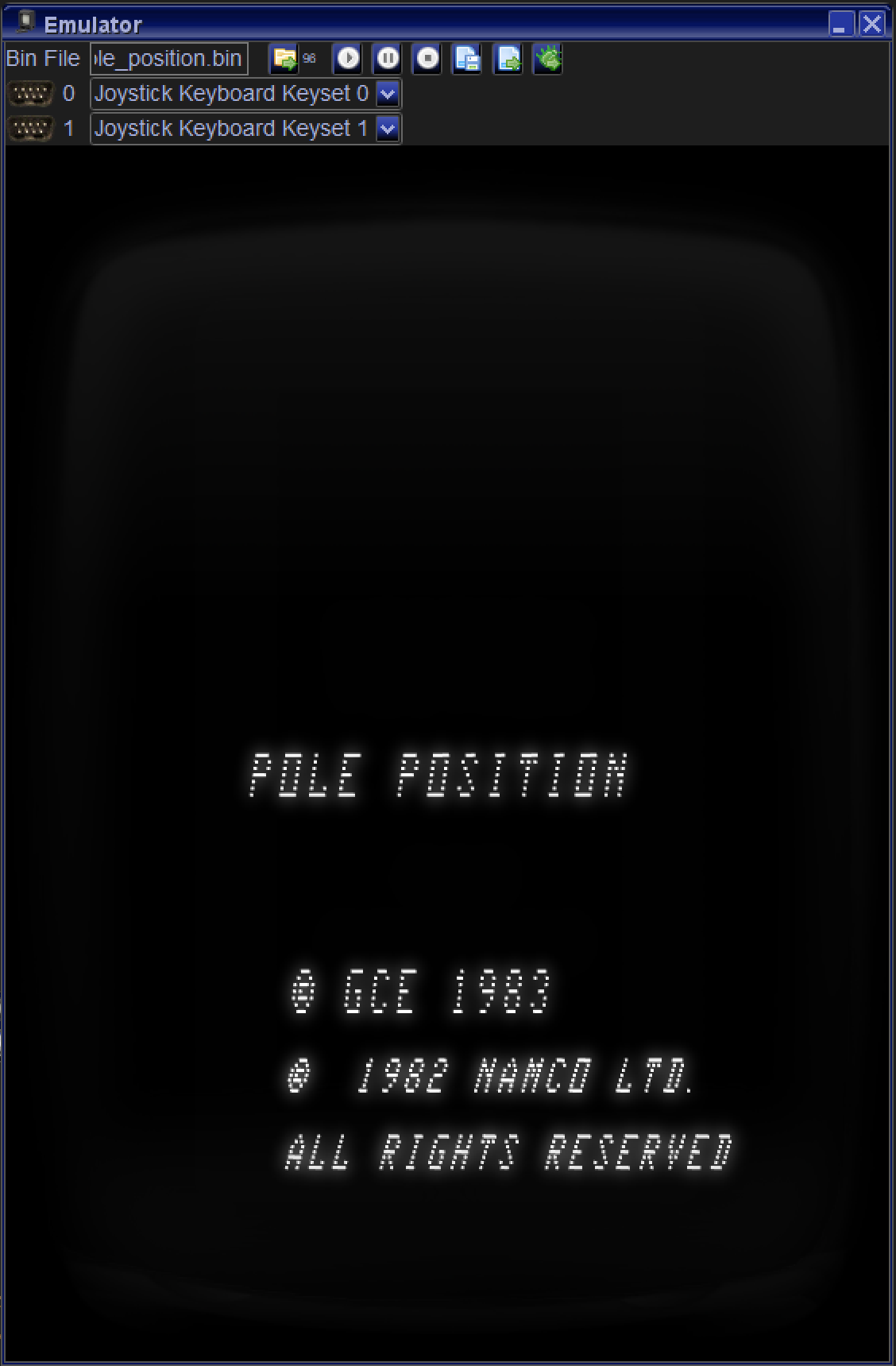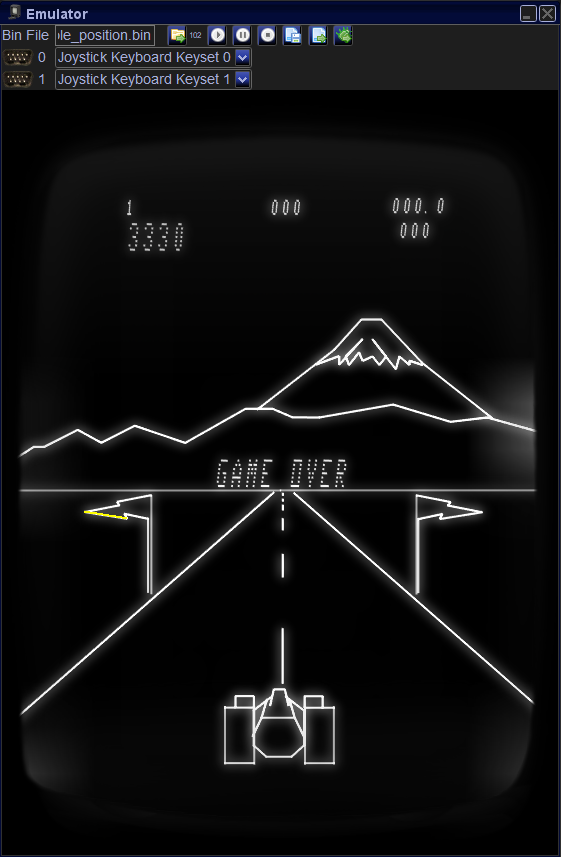Weird Science - Tales from the
Vectrex Academy Lab

Vectrex
Project Title
- A quick analysis of the Pole Position cartridge
and source code
Project
Status
Synopsis
- Digital Archeology - An investigation of the Pole
Position cartridge
- Recently, I was independently asked by two
different persons if I had already taken a look at
the Pole Position code, and if it possibly contained
any information about the as-of-yet unknown
programmer(s) of this game. I had not. But I got
into an interesting conversation with one of these
guys and at some point could not resist the urge to
give the code a quick glance. It turned out that the
code (as I had
expected) does not contain any
obvious hints to by whom it has been programmed. But
I found another thing:
- There is an Easter Egg hidden
inside Pole Position. And the way by which it is
hidden is insanely clever!
- However, to say this right here at
the beginning, the Easter Egg does not reveal
the name of the programmer. Or does it?
Easter Egg
- I have to repeat myself. This is insanely clever.
I am not talking about the method how to trigger the
Easter Egg. That method is only mildly crazy. But
the way this is implemented and hidden inside the
code is absolutely great. I will try to explain this
below as best as I can.
- In order to trigger the Easter Egg,
you must have a final score of 3330 points.
Then, when the game over message is
displayed, wait until the game over
melody has finished, and then press
buttons 2+3+4 all at the same time while also
pressing the joystick to the left
(pressing all buttons at exactly the same moment
is a bit tricky).
- Then, from here on, the following screen on the
right will be displayed in an endless loop:
 
- I think this might be a reference to the
programmer.
- Now we have to find out, if there was a GCE
programmer who was nicknamed "The Kid"...
The
ingenious way this is implemented
- A lot of Vectrex games contain hidden
information about the names of the respective
programmers. In most cases, those names are
printed to the screen by means of the Vectrex
Print_Str() BIOS functions, and the names are
stored as ASCII strings somewhere in the ROM.
Such texts can easily be found by viewing the
game ROM in a hex editor. And such texts also
appear somewhere in the assembly source code in
a readable format.
- My theory is that at some point GCE likely
became aware of the programmers including their
names in the code and possibly tried to prevent
them from doing so. Therefore, the programmers
had to find a way to obfuscate their credentials
so that they did not appear in the code in a
readable way.
- We already knew of one game where this was
done. In Bedlam, the name of the programmer is
stored as encrypted data in the ROM, and there
is a routine which decrypts this data to RAM and
then prints it to the screen (see here for more
details).
- Pole Position does a similar thing. But the
name (i.e. the text "THE KID") is not stored as
encrypted data, but is encrypted in executable
code!!!
- The Pole Position code contains a subroutine
(for the sake of simplicity let us call it
subroutine A) which looks completely innocent
and which is repeatedly executed while the game
over melody is playing. This subroutine does a
lookup in the BIOS tune table and seemingly
computes a note to be played, and branches to
another soubroutine (let us call that one
subroutine B) when the game over melody has
finished. However, the notes that are computed
in subroutine A are effectively not used, so
subroutine A basically does nothing.
- The branching to subroutine B is done by doing
two indirects jumps. Meaning: when looking at
the code it is far from easy to see what code
will effectively be executed next after
subroutine A.
- And here it comes: subroutine B now reads the
ROM part in which the code of subroutine A
resides. I.e. it reads the numerical codes of
the assembly instructions of subroutine A,
interprets them as encrypted data, and decrypts
them to ASCII letters by adding a numerical
offset to the value of each instruction: The
instructions of subroutine A decode to the
string "THE KID".
- This is insanely clever! The programmer must
have carefully tuned subroutine A to contain
instructions that seem to do something
reasonable, yet something that effectively does
nothing, and that have numerical values which
decode to "THE KID".
- Since subroutine A is obviously executed and
appears to do something plausible, who would
ever suspect that in fact this routine does not
contain productive code but encrypted data?
- I bow to such ingenuity!!!
Update
08/15/2024
- Mystery solved, I was
contacted by THE KID himself.
- He send me a very nice and
friendly email, detailing his role as
lead programmer of Pole Position and how
he implemented the Easter Egg.
- He also kindly gave the
permission to reveal his name here: Joel
Hassel.
Credits
- Again, this analysis would
not have been possible without Vide.
- Many thanks to Malban for
his continuous support.
Author
Latest
modification on 08/15/2024, 11:00
|
